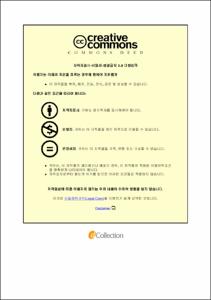신생아·영아 말초정맥주사 부위에 따른 유지기간과 합병증 분석
- Alternative Title
- Analysis of the Duration and Complications of Peripheral Intravenous Sites in Neonates and Infants
- Abstract
- 본 연구는 12개월 이하 신생아와 영아의 말초정맥주사 부위에 따른 유지 기간과 합병증 발생률을 확인하기 위한 후향적 조사연구로, 2019년 10월 1일부터 2023년 12월 31일까지 서울시 소재 일 상급종합병원에 입원한 생후 12개월 이하 신생아와 영아 5,110명의 말초정맥주사 유지 기간 기록 21,905건, 합병증 기록 10,895건의 의무기록을 분석하였다.
수집된 자료는 대상자의 일반적 특성, 말초정맥주사 특성에 따른 유지 기간과 합병증 발생률을 빈도수와 백분율, 평균과 표준편차, 독립 표본 t-검정, 일원배치 분산분석, 교차분석으로 분석하였다.
본 연구의 결과는 다음과 같다.
1. 연구대상은 5,110명의 말초정맥주사 유지 기록 21,905건, 합병증 기록 10,895건이었으며, 남아 2,945명(57.6%), 여아 2,165명(42.4%)이었고, 평균연령 68.38일로, Neonate(0-1개월) 2,189명(42.8%), Early infant(2-3개월) 1,293명(25.3%), Infant(4-12개월) 1,628명(31.9%)이었다. 평균 체중 3.34kg로, 1.5kg이하 356명(7.0%), 1.51~2.50kg 1,004명 (19.7%), 2.51~3.50kg 1,242명 (24.3%), 3.50kg초과 2,508명(49.0%)이었고, 1회 평균입원일은 19.21일이었다.
2. 주사 부위는 팔 3,463건(15.8%), 손 8,928건(40.8%), 다리 1,644건(7.5%), 발 7,231건(33.0%), 머리 639건(2.9%)으로, 손이 가장 많았다. 유지 기간은 평균 39.66시간이었으며, 24시간 이하 9,370건(42.7%), 24~48시간 6,343건(29.0%), 48~72시간 2,785건(12.7%), 72시간 초과 3,407건(15.6%)으로 24시간이내 제거된 경우가 가장 많았다.
3. 유지 기간은 남아 40.36시간, 여아 38.73시간으로 남아가 여아보다 길었다 (t=3.457, p=.008). 연령은 Neonate 34.01시간, Early Infant 44.90시간, Infant 47.21시간으로 Infant가 Neonate보다 길었다(F=326.806, p<.001). 체중은 1.5kg이하 35.50시간, 1.51~2.50kg 31.73시간, 2.51~3.50kg 42.79시간, 3.50kg초과 46.95시간으로 3.50kg을 초과하는 경우 1.51~2.50kg보다 길었다 (F=253.380, p<.001). 주사부위는 팔 42.79시간, 손 39.76시간, 다리 36.68시간, 발 38.77시간, 머리 38.68시간으로 팔이 다리보다 길었다 (F=11.072, p<.001).
4. 연령에 따른 주사부위별 유지 기간은 Neonate는 발이 손보다 길었으며(F=5.841, p<.001), 말초정맥주사 권장교체 주기 72시간을 넘지 않는 군과 72시간을 넘긴 군 모두 손에 삽입한 경우가 가장 많았다(x2=12.109, p=.017).
Early infant는 팔의 유지 기간이 다른 부위에 비해 길었으며(F=21.058, p<.001), 권장교체주기를 넘긴 군은 손에 삽입한 경우가 가장 많았던 반면 넘기지 못한 군은 발이 가장 많았다(x2=68.626, p<.001).
Infant는 팔과 손의 유지 기간이 다른 부위 보다 길었으며(F=31.043, p<.001), 권장교체주기를 넘긴 군은 손에 삽입한 경우가 가장 많았던 반면 넘기지 못한 군은 발이 가장 많았다 (x2=123.136, p<.001).
5. 합병증 발생 빈도는 5.9%(652건)였으며, 이중 침윤이 489건(75%)으로 가장 많았고 발적 154건(23.6%), 정맥염 9건(1.4%)이었다. 부위에 따른 합병증 발생률은 머리가 10%로 가장 높게 나타났고, 팔 7.0%, 손 6.1%, 다리 6.0%이었고, 발이 5.1%로 가장 낮게 나타났다.
연구결과 전체 대상자에서는 팔의 유지 기간이 가장 길고, 다리가 가장 짧았다. 세부 연령대에서는 Neonate는 발이 가장 길고 손이 가장 짧았고, Early infant는 팔이 가장 길고 발이 가장 짧았으며, Infant는 팔이 가장 길고 머리가 가장 짧았다. 합병증 발생률은 머리가 가장 높았고 발이 가장 낮게 나타났다.
또한 정맥주사 삽입 후 24시간 이내 기능상실이 일어나는 경우가 가장 많아 삽입 후 24시간 동안은 담당간호사와 상주 보호자의 추가적인 지속 관찰이 필요할 것으로 사료된다. 이를 위해 연구결과를 바탕으로 담당간호사와 보호자에게 실제적이며 체계적인 교육과 부위 관찰에 대한 정보전달이 필요하며, 정맥주사를 삽입할 때는 부위 선정에 있어 신체 굴곡 부위를 제외한 팔과 손을 우선적으로 고려하여 접근할 필요가 있을 것이다.
주요어 : 간호사, 말초.카테터 삽입, 부작용, 영아.신생아|Purpose: This study analyzed the duration and complication rates of peripheral intravenous catheters in patients aged 12 months and younger by insertion sites. The aim was to provide a basis for developing practice guidelines to extend the duration of catheters, thereby reducing psychological anxiety in patients and fatigue in medical staff.
Method: The study analyzed 21,905 records of peripheral intravenous maintenance and 10,895 records of complications in 5,110 patients aged 12 months and younger admitted to Seoul Asan Medical Center from October 1, 2019, to December 31, 2023. Using SPSS, the data were analyzed for frequency, percentage, mean, standard deviation, t-tests, one-way ANOVA, and Chi-square tests to examine the duration of catheter maintenance and complication rates based on insertion sites.
Result: For neonates, foot catheter maintenance was longer than hand (F=5.841, p<.001), with the hand being the most common site, regardless of exceeding the 72-hour replacement cycle (x2=12.109, p=.017). In early infants, the arm had the longest duration (F=21.058, p<.001), exceeding the cycle was common for the hand, while not exceeding it was common for the foot (x2=68.626, p<.001). Infants had longer durations in the arm and hand (F=31.043, p<.001), with the hand most commonly exceeding the cycle and the foot not (x2=123.136, p<.001). Complications occurred in 5.9% (652 cases). The highest rate was in the head (10%).
Conclusion: The study found that the duration of peripheral intravenous catheters varied depending on the site of insertion. Additionally, dysfunction occurring within 24 hours after insertion was most frequent, necessitating additional continuous observation. When inserting peripheral intravenous catheters, it is important to prioritize access to the arm and hand, excluding flexion points, for site selection.
Key words: Complications; Infant,Newborn; Nurses; Peripheral,Catheterization;
- Issued Date
- 2024
- Awarded Date
- 2024-08
- Type
- Dissertation
- Keyword
- 간호사; 말초 .카테터 삽입; 부작용; 영아 .신생아
- Alternative Author(s)
- Jusong Cha
- Affiliation
- 울산대학교
- Department
- 산업대학원 임상전문간호학
- Advisor
- 김연희
- Degree
- Master
- Publisher
- 울산대학교 산업대학원 임상전문간호학
- Language
- kor
- Rights
- 울산대학교 논문은 저작권에 의해 보호받습니다.
- Appears in Collections:
- Industry > Professional Clinical Nursing
- 파일 목록
-
-
Download
 200000809677.pdf
기타 데이터 / 3.26 MB / Adobe PDF
200000809677.pdf
기타 데이터 / 3.26 MB / Adobe PDF
-
Items in Repository are protected by copyright, with all rights reserved, unless otherwise indicated.